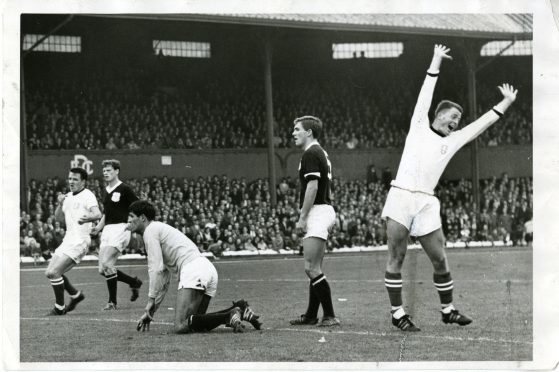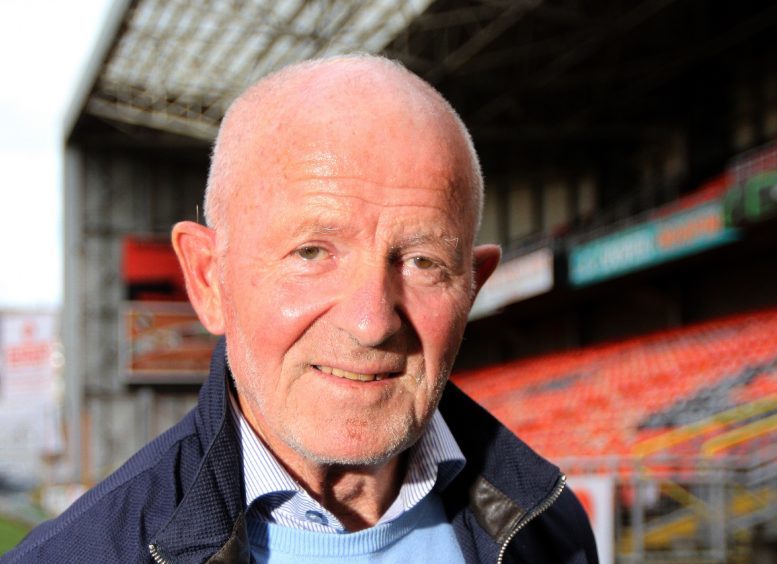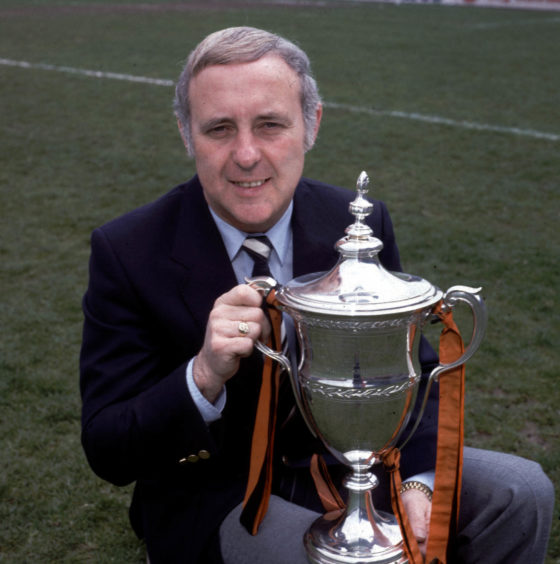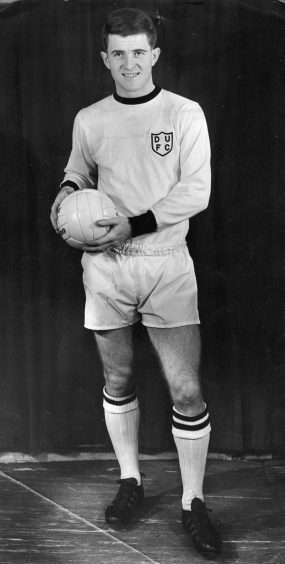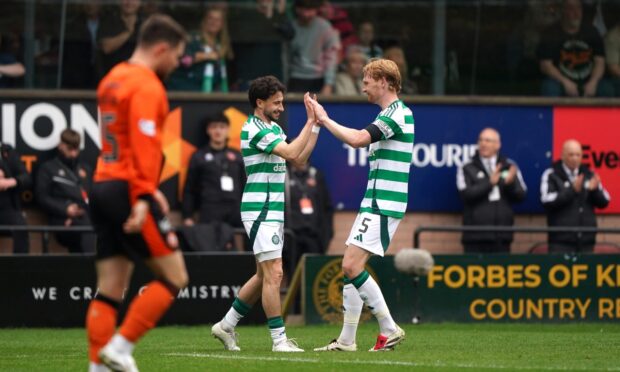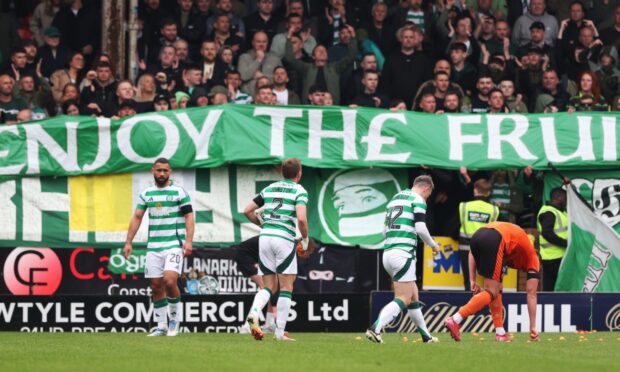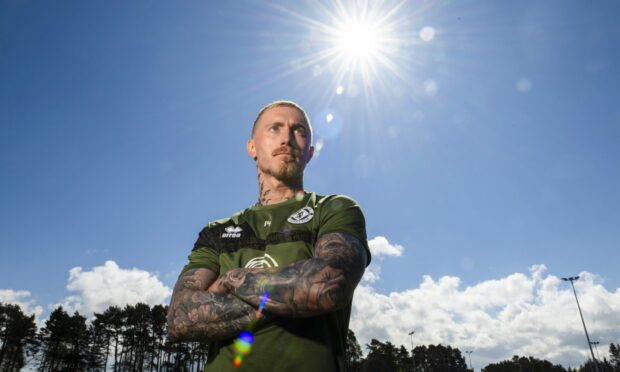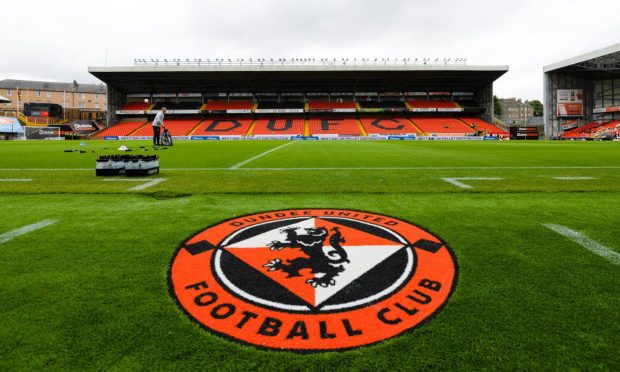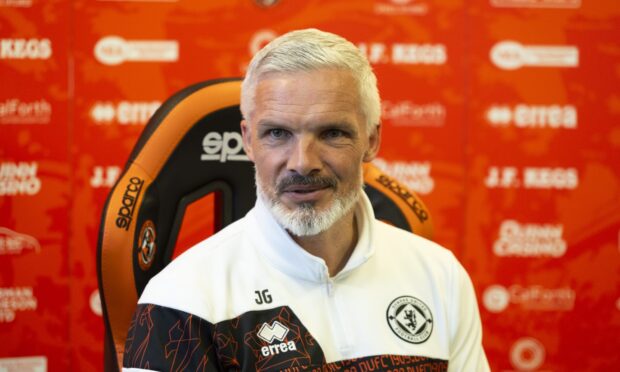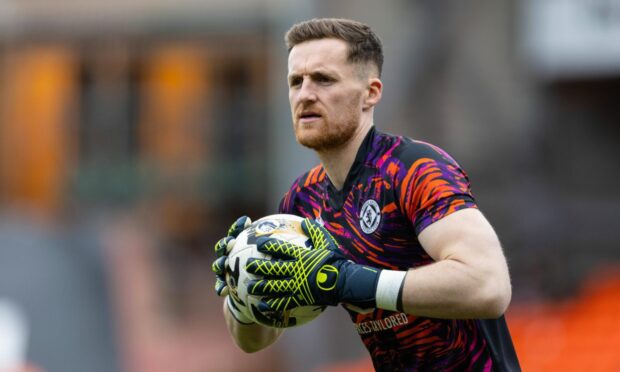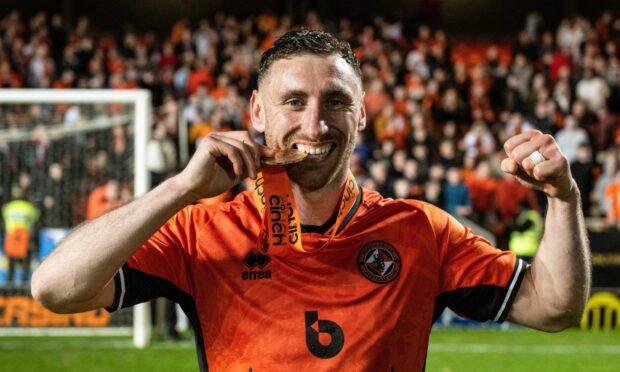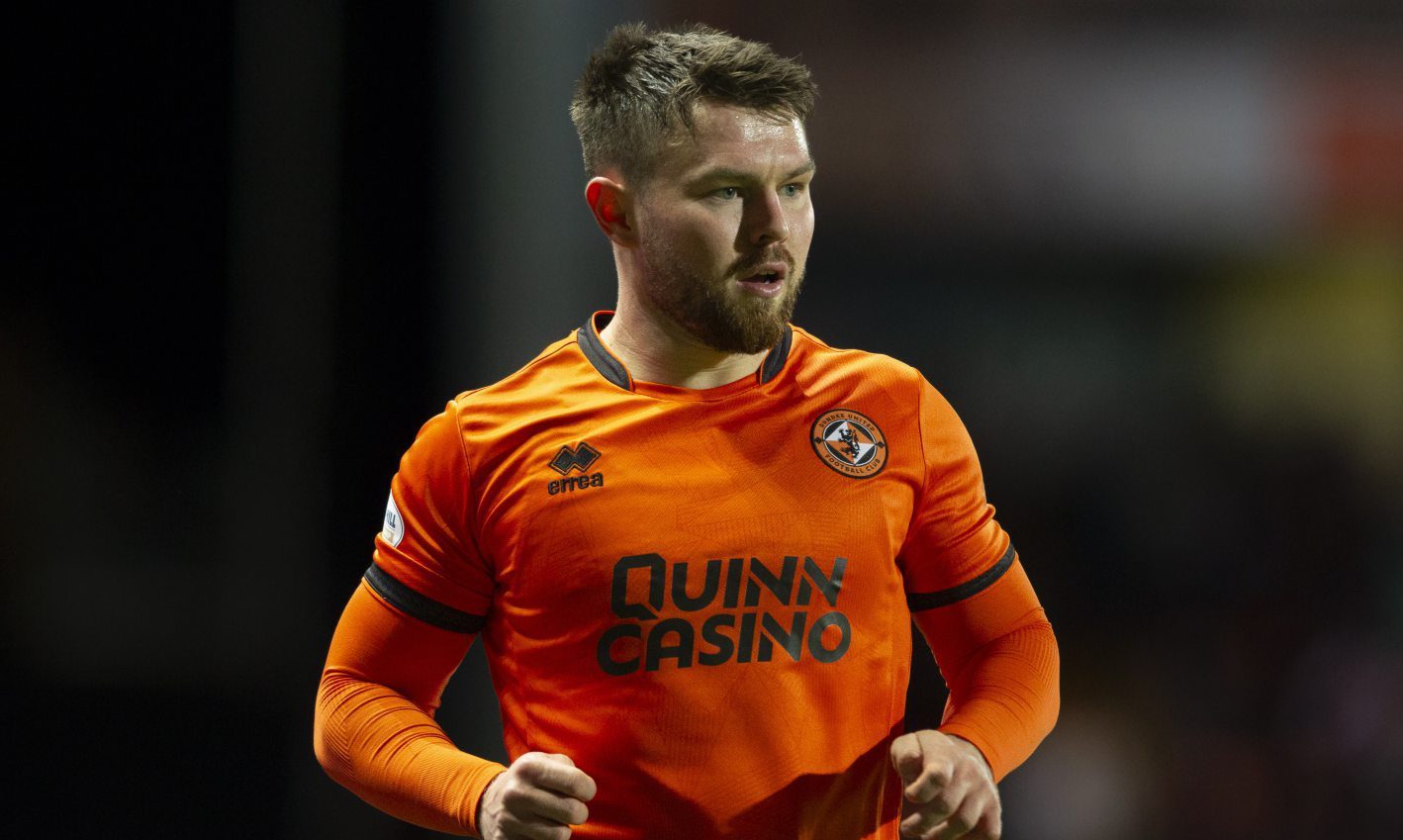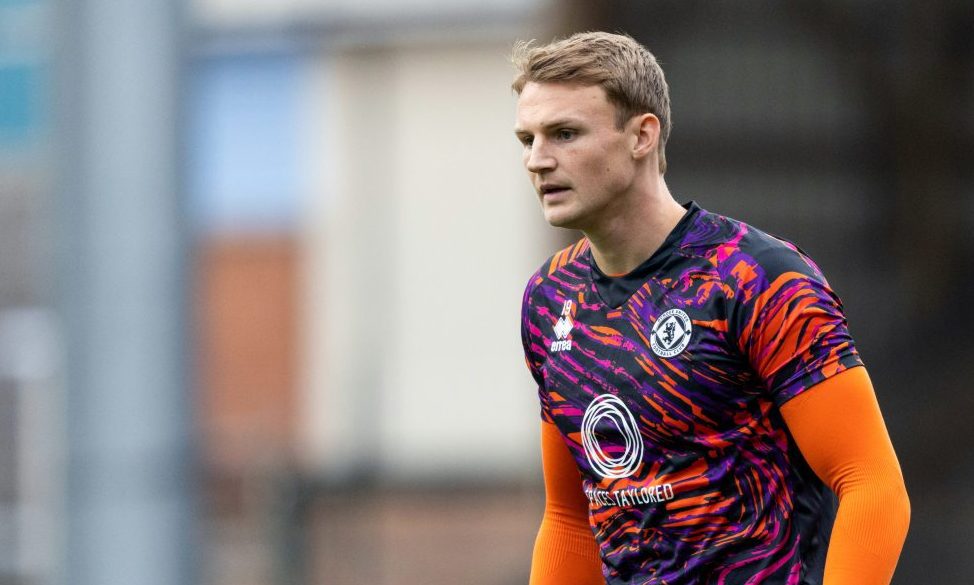It is one of the most famous results in Dundee United’s history and is celebrating its 55th anniversary today.
The match in question did not take place during the brilliant managerial reign of the legendary Jim McLean; it did not win the Tannadice side a gleaming silver trophy; and nor was it one of the rampaging victories over classy continental competition for which they were to become renowned.
It wasn’t any of those things but it was still very special indeed, so much so that someone wrote a song about it.
The occasion even gained a nickname that has stuck, hinting at a gruesome outcome for their defeated foes.
We speak, of course, of the Dens Park Massacre of ’65.
The date was September 11 – five and a half decades ago to the day – and the venue, well that is self-explanatory.
The scoreline was Dundee 0, Dundee United 5 (five).
The fun fact was a certain inside-forward called Jim McLean made his debut for his new club, not for United but for their city rivals.
The Dark Blues, who were managed by Bobby Ancell, lined up: Ally Donaldson, Alex Hamilton, Bobby Cox, Doug Houston, Jim Easton, Alex Stuart, Carl Bertelsen, Alan Cousin, Kenny Cameron, Charlie Cooke and Jim McLean.
United’s team, selected by boss Jerry Kerr, was: Donald Mackay, Doug Smith, Tommy Millar, Jimmy Briggs, Benny Rooney, Tommy Neilson, Lennart Wing, Frannie Munro, Orjan Persson, Finn Dossing and Dennis Gillespie.
A crowd of 15,058 watched the derby, perhaps fewer than you would have expected for the mid-sixties.
The head-to-head clash to savour was United’s 17-year-old half-back Munro up against the Dark Blues’ record signing Cooke.
The hero, though, was to be Dossing, the Tannadice team’s very own Prince of Denmark.
The question wasn’t: “To be or not to be?” It was: “To be three or not to be three?”
He provided the answer in what played out as a footballing tragedy for the home team.
Dossing – younger readers should think of a latter-day Lawrence Shankland with a Nordic twang and top-flight experience – was wearing his golden boots that afternoon.
He scored his first goal after 14 minutes, bending down to head into the net after Persson had nodded the ball on.
It was 2-0 thanks to Dossing on 55 minutes when he turned and sent a strike past keeper Donaldson.
Gillespie grabbed the third with 64 minutes on the clock after teenager Murno cut the ball back to him.
Dossing got his hat-trick in the 87th minute when Donaldson could only help his shot over the line, while Wing scored the fifth from the penalty spot a minute later after Dundee captain Cox had brought down Persson inside the box.
On a recent visit to Tannadice, Dossing revealed he loved getting his hat-trick but wasn’t keen on the name the game had been given.
Asked to recall the “Massacre,” he replied: “I don’t call it that.
“Dundee were a good team at that time and I won’t say anything bad about them.
“I just call it a great game for us.
“We had a day when everything went right for United.
“We had some great players, for example Doug Smith and Dennis Gillespie as well as the Scandinavians.
“United had chances and we scored each time. Everything worked out right for us.”
Dossing is too humble to say it but their centre-forward was the star.
United expert and long-serving Tannadice match programme editor Peter Rundo saw him in full flow that afternoon.
Peter was a spectator at Dens, taking his place in the stadium as a rather wary 16-year-old.
By full-time, though, all his pre-match concerns had turned into celebrations, thanks largely to some Danish dynamism.
Peter recalled: “The thing that sticks in my mind about the lead-up to that derby was that United hadn’t started the season well at all.
“In the four games going into that one they had lost twice to Celtic, once to Dundee and then been beaten by Motherwell at Fir Park.
“You weren’t going across the road with any confidence as a United fan really, although we did have a decent record at Dens around that time.
“To make matters worse, we were missing Morgens Berg because he had gone through a back operation.
“The victory would actually be United’s first league win of the season – and what a win it was.
“Dundee couldn’t do anything about Dossing’s finishing.”
Indeed, Peter views the victory as a catalyst for what was to come from Kerr’s team.
The following half-a-dozen matches saw United beat St Johnstone 5-1, St Mirren 2-1, Partick Thistle 5-2, Dunfermline 4-2, Falkirk 6-1 and Hamilton 7-0 – a total of 28 goals!
“Incredibly, given how he played, Finn hadn’t scored that season until the Dundee game,” added Peter.
“Then, after that result, the whole team went on a goal spree. It was a blistering run of form.”
It is hard to exaggerate the importance of the derby result. It takes its place in tangerine folklore.
The Sporting Post headline that night had the simple message: “Dazzler Dossing.”
Writing in his book Rags to Riches, Mike Watson noted: “United crossed the road on league business and although Dundee paraded their new inside-forward, a certain Jim McLean from Clyde, all the headlines were made by the men in white. In what has become immortalised in the folklore of the club by supporters’ song, ‘The Dens Park Massacre of ’65,’ United demolished the Dark Blues with a 5-0 win, particularly notable for a hat-trick by Finn Dossing.”
In Rise of The Terrors, author Steve Gracie wrote: “Dundee had no answer to a hard-tackling, fast-moving United and the only Dundee player to emerge with pass marks was debutant Jim McLean, later to manage United.”
For a young Peter, though, McLean’s display wasn’t memorable. It was the white-clad 11 who caught his eye.
“When the action started, Dundee put up little resistance,” he said.
“It was a dominant performance from a United team that just clicked.
“I know it was Jim McLean’s debut for Dundee but, to be honest, he didn’t get a chance to show what he could do and the same goes for the rest of their team. It was all about United.”
The Dundee derby fixture has earned a reputation – disputed by some – for being different from other all-city clashes…in a good way.
Eyes mist over when people chat about brothers and sisters, wives and husbands, school pals – all making their way to Dens and Tannadice together, wearing different coloured scarves and meeting up again afterwards regardless of the result.
It is a romantic story and one that is built, fundamentally, on truth.
Peter, who has dedicated so much time and energy to the Tangerines over the decades, said: “I can’t remember exactly where I stood for the 5-0 match but there was no segregation and you could move ends inside the ground, even for derbies.
“There also was even less animosity among the two sets of fans than you get now.
“United, of course, were seen as the upstarts but the situation between both sets of supporters wasn’t as polarised as it is nowadays.
“I would have been 16 at the time and I was United through and through but even I went to watch some of Dundee’s European games.
“We were spoiled in the city with a Dundee side that had won the league not too long ago and a United team under Jerry Kerr that had the great Scandinavians and would go on to beat Barcelona home and away – the first time around!
“Actually, we all talk of the 1980s as United fans because they were the great days under McLean but it was also good to be a supporter in the sixties.”
The “Massacre” remains United’s biggest win over Dundee – home or away. It still stands after 183 meetings in all competitions.
United’s derby record reads: won 83, lost 55 and drawn 45.
Peter, through his work at Tannadice, witnessed the last two scorelines that came closest to beating it: the 6-2 wins, achieved on January 1, 2015, and August 30 of last year.
He said: “I must admit that I was furious when we lost a late goal (Luka Tankulic netted in the 90th minute) in the first 6-2 match because I was well aware of its significance in Dundee derby history.
“As for the second 6-2 game, I am happy to concede that the scoreline flattered us.
“That first one, though, definitely had the potential to beat ‘65. Maybe it will happen one day.”
